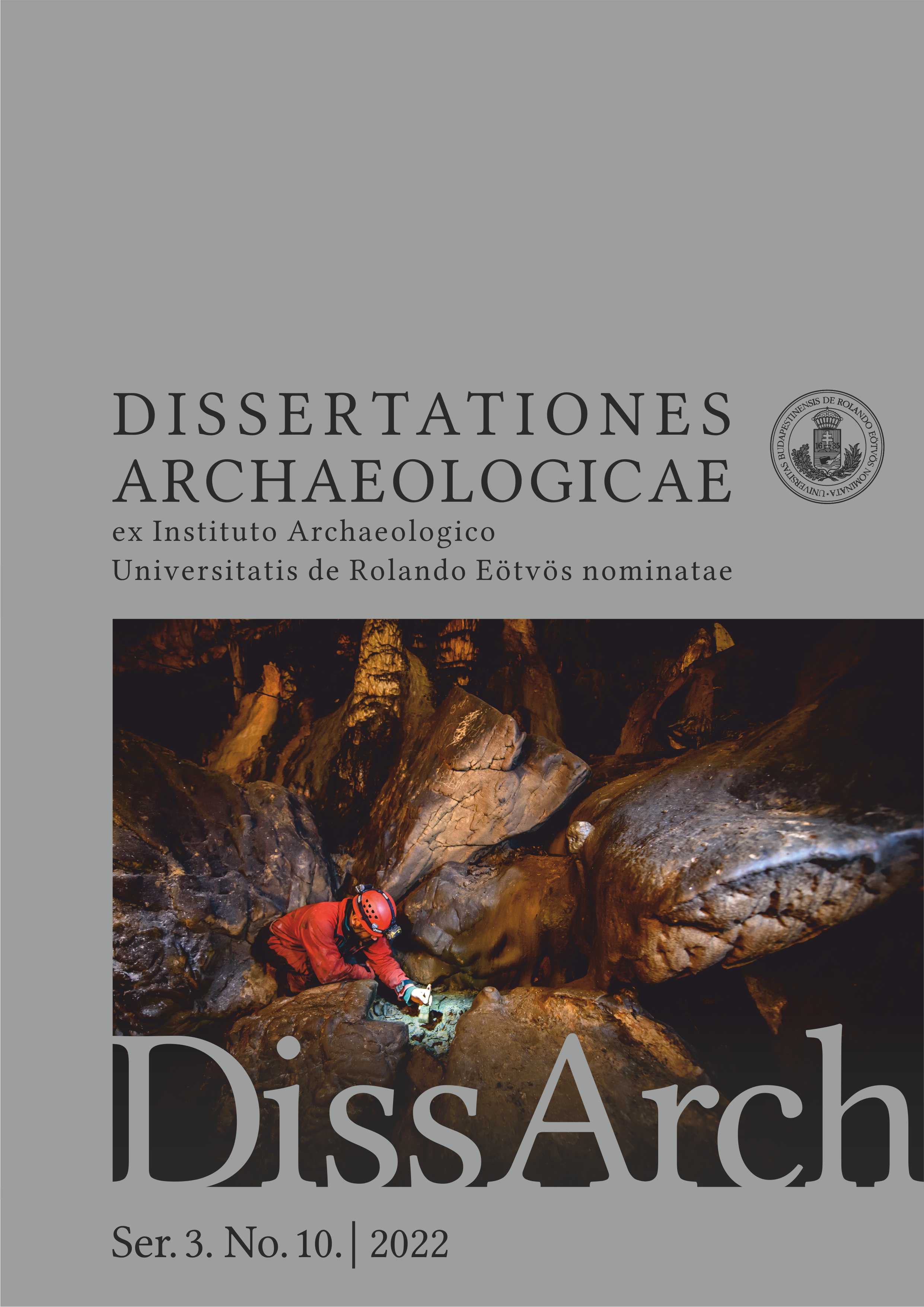Published 2023-03-31
Keywords
- yellow pottery, Late Avar Period, chaîne opératoire, workshop
How to Cite
Abstract
Review article of PhD thesis submitted in 2022 to the Archaeological Doctoral Programme, Doctoral School of History, Eötvös Loránd University, Budapest under the supervision of Takács Miklós.
In her PhD dissertation, the author surveyed the yellow pottery finds of the Late Avar Period, collecting 1,032 fragments and complete vessels from 232 archaeological features. The term yellow pottery as a terminus technique refers to a pottery type characterised by a very diverse material composition, production method, shape, and decoration set.
The related find material was classified into the following ‘functional’ types: 1. mug with a handle, 2. mug without a handle, 3. bottle, 4. kettle (spouted jug), 5. jug, 6. beaker, 7. bowl, 8. pot, 9. pitcher, 10. flat bottle (flask), and 11. amphora-like vessel.
Workshops producing yellow pottery could be located in the close surroundings of Szekszárd (so-called Danube workshop circle), at the estuary of the Körös River, and in the outskirts of Hódmezővásárhely (so-called Tisza workshop circle). Yellow pottery from these workshops was (probably) transported on roads, the lines of which mostly matched the Roman and medieval ones.
The Danube workshop circle started to produce yellow pottery at the start of the Late Avar Period. The Tisza workshop circle most likely started to operate in the third phase of the Late Avar Period (second part of the 8th century AD). Both workshops remained in business until the first half or the second third of the 9th century AD.


